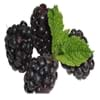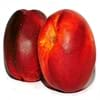Health Benefits
Cancer prevention, Gout treatment, Heart care, Regulation of heart rate, Treatment of rheumatism
Anti-oxidant properties, Anti-inflammatory properties, Cancer prevention, Maintains healthy cholesterol level, Reduces blood circulation problems, Treatment of cough, fever & sore throat, Treatment of Hypertension
General Benefits
Anti oxidant properties, Controls blood pressure, Cures fever, Digestive aid, Healing of wounds, Helps in weight loss, Strengthens bones
Treatment of asthma, Treatment of cataract, Treatment of hepatitis, Treatment of macular degeneration, Treatment of neurodegenerative diseases
Skin Benefits
Brightens and lightens complexion, Reduces wrinkles, Treatment of acne
Treatment of Rheumatism & Dermatitis, Treatment of Skin Inflammation
Hair Benefits
Protects hair
Unknown
Allergy Symptoms
Abnormally rapid heart rate, Anaphylaxis, Breathing difficulty, Hives, Itching, Swallowing difficulties
NA
Side Effects
Possibly unsafe during pregnancy
Hypertension, Ventricular Tachycardia
Best Time to Eat
Best if taken as a breakfast (or empty stomach), As a snack in the late afternoon, Don't eat after meal, Morning time (before lunch)
As a snack in the late afternoon, Eat the fresh ones, avoid mixing with any other foods, don't eat after meal., Morning time (before lunch), Strictly avoid empty stomach
Vitamin B5 (Pantothenic Acid)
Not Available
Vitamin B6 (Pyridoxin)
Not Available
Vitamin B9 (Folic acid)
Not Available
Vitamin C (Ascorbic Acid)
Vitamin K (Phyllochinone)
Not Available
Lutein+Zeaxanthin
Not Available
Water Content
Not Available
Calories in Fresh Fruit with Peel
Calories in Fresh Fruit without Peel
Not Available
Not Available
Calories in Frozen Form
Not Available
Not Available
Calories in Dried Form
Not Available
Calories in Canned Form
Not Available
Not Available
Type
Berry
Fruit vegetable
Season
Summer
Spring, Summer
Varieties
Rovada, Stanza, Red Lake, Junifer and Jonkheer van Tets
Physalis franchetii, Physalis pruinosa, Physalis peruviana, Physalis heterophylla and Physalis philadelphica
Color
Red
Bright Yellow, Orange
Origin
Europe
Chile, Peru
Soil Type
Moist, Well-drained
NA
Climatic Conditions
Cold
NA
Facts about
- The albino version of red currants known as white currants, are often sold as different fruit.
- Red currant tea is healthy substitute for coffee.
- There are more than 150 varieties of red currants.
NA
Other Countries
Belgium, France, Germany, Ireland, Italy, Netherlands, Poland, Portugal, Scotland, Spain, Sweden, United Kingdom
NA
Top Importer
Germany
Netherlands
Top Exporter
Russia
Colombia
Botanical Name
Ribes rubrum
Physalis Peruviana
Synonym
Not Available
Alkekengi, Herschellia & Pentaphitrum
Subkingdom
Tracheobionta
Tracheobionta
Division
Magnoliophyta
Magnoliophyta
Class
Magnoliopsida
Magnoliopsida
Subclass
Rosidae
Asteridae
Order
Saxifragales
Solanales
Family
Grossulariaceae
Solanaceae
Species
R. rubrum
Physalis
Generic Group
Saxifrage
Not Available
Difference Between Red Currant and Physalis
We might think that Red Currant and Physalis are similar with respect to nutritional value and health benefits. But the nutrient content of both fruits is different. Red Currant and Physalis Facts such as their taste, shape, color, and size are also distinct. The difference between Red Currant and Physalis is explained here.
The amount of calories in 100 gm of fresh Red Currant and Physalis with peel is 56.00 kcal and 77.00 kcal and the amount of calories without peel is Not Available and Not Available respectively. Thus, Red Currant and Physalis belong to Low Calorie Fruits and High Calorie Fruits category.These fruits might or might not differ with respect to their scientific classification. The order of Red Currant and Physalis is Saxifragales and Solanales respectively. Red Currant belongs to Grossulariaceae family and Physalis belongs to Solanaceae family. Red Currant belongs to Ribes genus of R. rubrum species and Physalis belongs to Physalis genus of Physalis species. Beings plants, both fruits belong to Plantae Kingdom.









